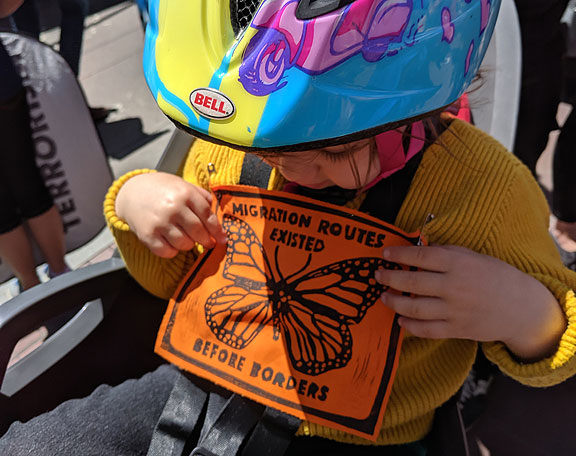
For a nation whose vaunted freedom was secured at the point where mass human bondage met genocidal expansion, what we are experiencing today is like a series of afterimages—the past-present that is these United States.
—Nikhil Pal Singh, Race and America’s Long War, p. 122
The 1924 Immigration Act, then, had an explosive effect. On the one hand, the limits it placed on the numbers of European and Asian migrants who could enter the United States reinforced Mexico’s importance as a source of cheap labor for the United States’ expanding economy. On the other hand, it created an agency—the U.S. Border Patrol—that institutionalized a virulent form of nativism and concentrated its animus on Mexican migrants.
—Greg Grandin, The End of the Myth: From the Frontier to the Border Wall in the Mind of America, p. 124-125
I live on stolen land, and you do too. Here in San Francisco we all live on unceded Ohlone territory. After the Spaniards came along with Catholicism and cows, the local folks were mostly wiped out by overwork and disease. But not everyone died, and descendants have emerged in the past decades. California’s First Peoples are working hard to undo the ignorance and cultivated amnesia that repeats the false tale of their complete genocide.
After Mexico gained its independence, the lands that the Spanish crown had allocated to the Missions to hold in trust for the “neophytes” (the new colonists that they hoped to make out of the Indians they brought into their Inquisition-shaped world), were usurped by the Californios. Bernal, De Haro, Noe, Vallejo, Peralta and many others were soon lords of tens of thousands of acres of prime California real estate. But their paradise didn’t last long. The United States provoked a war in 1846 and used it to seize the northern third of Mexico, and within a couple of decades all the original Mexican ranchos had been squatted and stolen, often with legal sanction by U.S. courts.
It’s remarkable how much this blatant and venal theft at the origins of American California is left out of the narratives taught children in schools. But then on second thought, it’s not really so surprising. Early historians of California (and before that, historians of the United States) held strange, race-based ideas that escaped historical analysis. In one of the books I’ll be discussing here, Greg Grandin’s excellent The End of the Myth: From the Frontier to the Border Wall in the Mind of America, he makes this point:
If the study of history is the study of change, these early historians of the United States were decidedly ahistorical. Their germs were something like the physicists’ Big Bang, sudden and pristine. When the Puritans landed, “their institutions were already perfected,” George Bancroft, among the country’s most influential historians prior to Turner, wrote. Woodrow Wilson, who studied with Turner under Adams at Johns Hopkins, argued in 1899 that early Christian settlers “were inventing nothing”; ideas that would later result in the Declaration of Independence and the Constitution were already fully formed upon their arrival in the New World. Americans, Wilson said, were “simply letting their race habits and instincts”–as developed in Europe–”have natural play.” (p. 114)
Writing in Race and America’s Long War, Nikhil Pal Singh delves deeper into the psychology of settler colonies like the United States. He reveals the very structure of thought that makes it so difficult to hold any self-awareness of the barbarism that accompanied the founding of the nation.
… in the United States, (and other settler colonies), invasion, occupation, and territorial dispossession constitute not a singular event but a structure of reasoning, feeling, even imagination… one that demands fealty and that orients attitudes toward the present and future. (p. 24-25) … The military tradition conferred by the Indian wars included practices of “extirpative war” that observed no distinction between combatants and civilians, combined with the adoption of forms of exemplary, extravagant violence said to have been learned from the savages themselves, such as scalping. Settler frameworks, in turn, consciously blurred the lines between war and policing, investing ordinary citizens with an expansive police power. (p. 26)
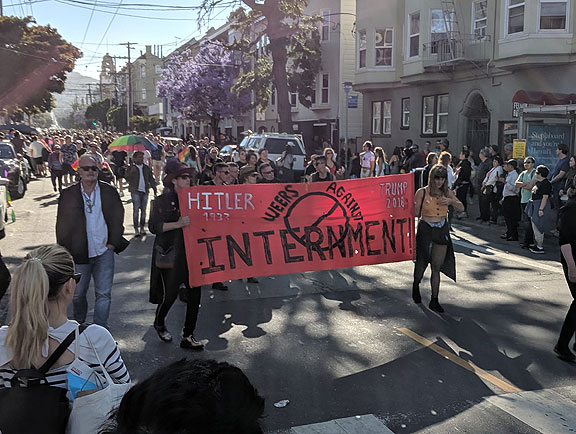
At the end of the second decade of the 21st century, the United States continues to flaunt its military but it is an increasingly empty and ineffective demonstration of pointless violence. Bombing multiple countries regularly, having torn up the Middle East and left whole swaths in smoking ruins, and maintaining military and spy installations in well over 100 countries around the world, you’d be hard pressed to explain why the so-called indispensable nation, the “most powerful country in the history of the world,” has such a hard time getting its way these days. The protracted decline of U.S. power is staring us in the face, but politicians go on blithely proclaiming the unique goodness of the American project as though it were 1949 or even 1962 (not that it was any good then either!).
Constant rituals glorifying the military amidst crumbling infrastructure and stark social decomposition, incessantly claiming “we’re #1,” requires a great deal of ignorance and self-delusion. Digging deeper into the complicated past lets us trace a quite different arc than the syrupy self-congratulations that passes for history. It turns out that the United States has been on the wrong side far more often than not in its bloodthirsty, racist efforts to dominate the world. The roots of this despicable orientation are not hard to find in the very founding of the country, and have been advanced by awful, mean-spirited, politicians and their wealthy sponsors again and again.
Colin Galloway’s fascinating book The Indian World of George Washington provides a nuanced and detailed look at the land-hungry speculator who became the first president of the United States. It’s strange to realize that the first four years of his presidency, 1789-1793, were characterized by an active “foreign policy” that mostly involved days- and weeks-long visits from dozens of visiting dignitaries from the cultures of the southern United States, i.e. Creeks, Cherokees, Choctaws, and others. Washington knew he had to make peace with these militarily powerful civilizations that occupied most of today’s deep South, because his priority at the time was to wrest control of the Ohio River valley from the Shawnee and their many allies. It also required him to continue an ongoing peace with the Iroquois confederation. His goal was to avoid facing a wider alliance of indigenous peoples who together at the time could have blocked the expansion of the United States westward (and by so doing, made Washington’s investments in thousands of unceded acres in western Pennsylvania and eastern Ohio worthless). Galloway is a fantastic historian of Indian North America, with many other books covering the Plains Indians, the Shawnee, and others. He recounts the ill-fated first U.S. military expedition led by General Arthur St. Clair that was wiped out by a broad alliance of Indian tribes in 1792 not far from today’s Pittsburgh. In this book he unpacks the fraught relationships that Washington and his allies made and broke both before and after the Revolutionary War with various tribes of eastern North America. It helps makes sense of the longer trajectory of genocidal violence that the U.S. pursued consistently through the following century—a history that looks so bad that few have been willing to give it the central importance in national history that it deserves.
Before the Revolution, Benjamin Franklin, Hector St. John de Crèvecoeur, and others had noted that while few Indians chose to become “civilized,” many people went willingly to live with Indians. Indian society, said Crèvecoeur, exerted a “singular charm” on Europeans; Franklin said that people who had lived with Indians and then returned home soon “become disgusted with our way of life.” Washington’s policies of civilization evidently did little to change the fact that some people preferred to live with the Indians. Francis Baily, an Englishman traveling the backcountry in 1797, observed that people like this were to be found throughout Indian country, “yet you seldom hear of an Indian renouncing his mode of living or his country, and imposing upon himself the bonds and shackles of civilized society.” (p. 457)… [John] Knox [Washington’s Secretary of War] lamented, “it is a melancholy reflection that our modes of population have been more destructive to the Indian natives than the conduct of the conquerors of Mexico and Peru. The evidence of this is the utter extirpation of nearly all the Indians in most populous parts of the Union. A future historian may mark the causes of this destruction of the human race in sable Colours.” (Galloway, p. 452)
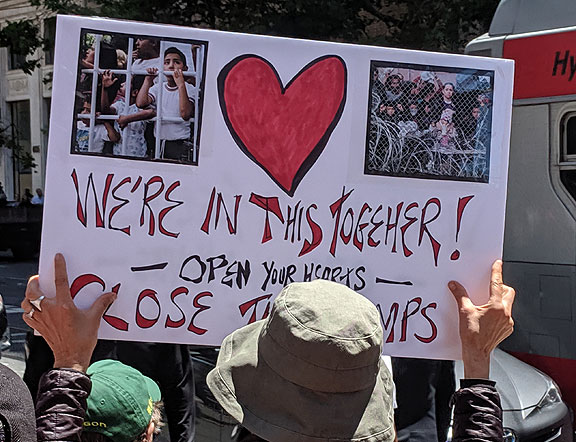
Knox’s lament is profound. In another post I discussed Jill Lepore’s excellent account of the war between the early New England settlers and the Indians of today’s Massachusettes, Connecticut, and Rhode Island. She emphasizes that the pilgrims were determined to preserve their self-image of being more civilized than the barbaric Spanish had been in Mexico and South America. But through “extirpative war” they targeted crops, villages, women and children, and readily enslaved conquered populations. As Lepore shows, the ensuing written accounts went to great lengths to obscure these facts, in order to bolster a self-flattering narrative of bringing civilization to North America.
The common histories of the Spanish conquest of Mexico and Peru usually fail to emphasize the European conquerers’ pioneering role in unleashing total war. Matthew Restall’s fascinating revisionist history When Montezuma Met Cortés: The True Story of the Meeting That Changed History doesn’t mince words.
Holocaustic levels of slaughter and enslavement of non-European peoples marked the early modern genesis of our modern world. Cortés’s era was just the beginning. Over the successive centuries, between ten and twenty million Africans and indigenous Americans would be forced into slavery. Tens of millions more would be displaced and forced into servitude, would die from epidemic diseases, would suffer the tearing apart of families and the brutal exploitation of colonialism and imperial expansion. Such experiences were the political, economic, and moral platforms upon which our world was constructed. (p. 298) … the lesson of conquistador practices was that the rules no longer applied, the Spaniards let the genie of total warfare out of the bottle. (p. 317)
The unacknowledged history of the United States is that it is rooted in exactly this extreme violence, repeatedly inflicted on populations abroad and at home. Simplistic tropes about good guys and bad guys, evil empires and implacable foes, traitors and internal enemies, are all so much otherizing propaganda to bolster false claims of virtue and honor. Singh’s analysis of the overlapping and necessary connection of U.S. war-making and policing says it clearly:
If there is one constant in the history of U.S. expansionism, it is this discourse of disavowal. The problem of reconciling free development and democratic consent with offensive war and long-term military occupation, however, was as knotty two centuries ago as it is now. A principal means of resolution under settler expansionism was to define the “people” who were being despoiled, overrun, or occupied as nonpersons or subpersons—racial or quasi-racial threats to be eradicated or quarantined—and to describe the process of settlement as the execution of a providential design operating, as President Andrew Jackson put it, “beyond the reach of human laws.” (p. 99) … Racism is the means by which war became normalized as policing, and police action licensed war. (p. 67)
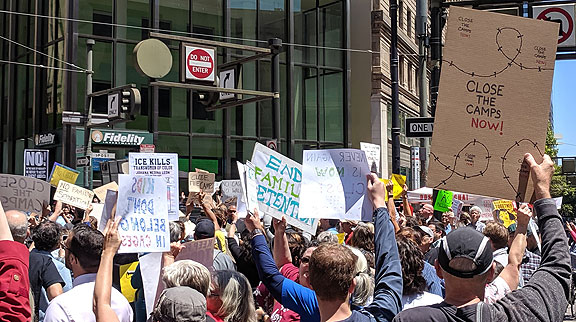
After the Mexican War ended in 1848, returning soldiers spread out across the newly acquired western territories, attacking Mexicans who found themselves on the wrong side of the new border, and unleashing genocidal violence against Indians. Grandin shows how as external wars of conquest ended, the wars came home.
When the [Mexican] war was over, some soldiers went back east, to New England’s manufacturing towns or to New York’s Bowery, their war-sharpened racism working its way into local politics, labor associations, and the Free Soil movement. Others spread out into the newly conquered western land, into California and up into Oregon. They were armed with federally supplied rifles and an ample stock of bullets, ready to deal with Native Americans the way they had with Mexicans. “A war of extermination,” the first U.S. Anglo governor of California predicted in 1851, “will continue to be waged between the races, until the Indian race becomes extinguished.” (p. 98)
As the U.S. plunged into Civil War the slaughter of Indians continued in the West, carrying on the violent imposition of the U.S. way of life. Grandin does a great job of tracing the preference for minimal government rooted in the early 19thh century Jacksonian political coalition and shows how those ideals re-emerged in the post-Civil War era. Focused on individualism and the sanctity of property rights, freedom was usefully defined as freedom from restraint. This ideology gave license to settlers to act as judge, jury, and executioner when they defined Indian self-defense as criminal. Singh touches on this too: “By the 1830s… settler sovereignty had decisively expanded its purview, precisely by describing indigenous violence (and counterviolence) as a type of crime and in turn creating new legal narratives for settler violence. According to Lisa Ford, the shift from a discourse of war to a discourse of crime is central to the substantive erasure of native sovereignty.” (p. 142)
By the 1890s, the Indian wars were over. Frederick Jackson Turner wrote his famous essay declaring the end of the frontier that decade, and according to Grandin, Turner was struggling to find a middle ground between corporate plutocracy and socialism that could define a new goal for society. Instead of stopping at the established borders, the U.S. decided to cross over them. The 1898 annexation of Hawaii and occupation of the Philippines and Puerto Rico were an aggressive expansion of U.S. territories. Daniel Immerwahl’s How to Hide an Empire: A History of the Greater United States is an entertaining and critical account of the growing archipelago of U.S. territories that came to be a substantial but mostly unacknowledged portion of both U.S. land and population. (I was fascinated to learn that the first islands seized by the U.S. in the Pacific were uninhabited “guano” islands, i.e. covered in birdshit. Dense layers of guano were rich in phosphate, a prime fertilizer that helped raise yields wherever it was applied to agricultural fields.) Hawaii’s monarchy was overthrown in a bloodless coup by Americans but the Philippines had been embroiled in a years-long war of independence. On the cusp of defeating the Spanish, the U.S. steamed into Manila harbor, staged a mock battle, negotiated a purchase price with Spain, and took over. Within a few months the U.S. provoked hostilities with the Philippine independence fighters, and the U.S. quickly found itself in its first southeast Asian quagmire, a war that lasted for years.
The most careful study, made by the historian Ken De Bevoise, found that in the years 1899-1903, about 775,000 Filipinos died because of the war.
“Of course, we do want military glory,” wrote Mark Twain, noting the death toll, “but this is getting it by avalanche.”
On July 4, 1902, Roosevelt proclaimed the Philippine War over. If De Bevoise’s calculations are right, it had claimed more lives than the Civil War.
Roosevelt’s announcement wasn’t the first time the authorities had declared an end to the war. It wasn’t even the second time. The Washington Post reminded readers that Taft had announced the “fourth and final termination of hostilities” two years earlier and that “the war has been brought to an end on six different occasions since.” (Immerwahr, p. 103)
Shades of Bush’s “Mission Accomplished”! But the U.S.-Philippine war not only galvanized anti-imperialists like Mark Twain. It also helped reintegrate officers and soldiers from the former Confederate states into the mission of projecting U.S. power across the Pacific. Grandin says the war of 1898 was “alchemic. It transformed the “Lost Cause” of the Confederacy—the preservation of slavery—into humanity’s cause for world freedom… The South, General Gordon said, was helping to bring “the light of American civilization and the boon of Republican liberty to the oppressed islands of both oceans.” (Grandin, p. 137) It was also the war where the U.S. developed water boarding, strategic hamlets, and other techniques of torture and counter-insurgency that they would employ decades later in Vietnam, and a half century after that in Iraq and Afghanistan.
Singh recounts the work of historian Alfred McCoy, who presents yet another angle on the U.S.-Philippine war:
… it functioned as a “laboratory of police modernity.” Here, the development and synthesis of new methods of clandestine operations, information science, photographic identification, demographic research, intelligence gathering, and legal repression far outstripped the capacities of major metropolitan police forces. (Singh, p. 49
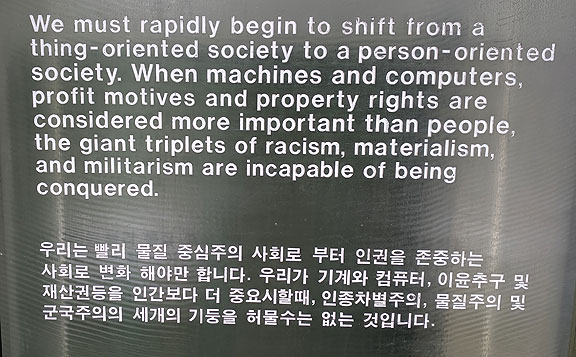
As we see regularly in 21st century urban policing, the boundary between military action elsewhere and police action at home is increasingly blurry. Surplus Pentagon equipment is sold to U.S. police departments. Heavily armed assaults by SWAT teams are routinely carried out across the country, even in small towns where violent crime is practically unheard of. Armored vehicles and even tanks have been deployed against peaceful urban demonstrations. Police have gunned down several thousand people since the turn of the 21st century, with almost total impunity.
The rising wave of state violence, at home and abroad, is deeply connected. The enormous expansion of military spending instigated first by Reagan in the 1980s, and then continuously by every administration since then even through the end of the Cold War, leads “naturally” to more war and more police and state violence. Singh and Grandin offer complementary analyses of this, both giving Clinton a key role.
In 1994, the passage of the largest crime bill in U.S. history established the preliminary legal and institutional architecture of the massively expanded national security state, something that grew paradoxically and in spite of the end of the cold war that had supplied the entire rationale for its initial growth. Statutory provisions for the “rendition” of foreign drug traffickers and for the suspension of ancient strictures on the internal use of military resources and personnel accelerated the dissolution of moral and conceptual boundaries between practices of domestic policing and public safety and external military aggression, with effects on both sides. (Singh, p. 146)
Clinton was Reagan’s greatest achievement. He carried forward the Republican agenda by combining a postindustrial fatalism—regulation wasn’t possible, austerity was unavoidable, budgets had to be balanced, crime was a condition of culture, not economic policy—with a folksy postmodern optimism, offering sunny bromides touting the “politics of inclusion” that endless growth would make possible. (Grandin, p. 233-234) … Promising “to speed the deportation of illegal aliens who are arrested for crimes,” Clinton signed a number of extremely punitive crime, terrorism, and immigration bills into law, which created the deportation regime that exists today. These laws closed down various routes for migrants to obtain legal status, eliminated judicial review, and required detention without bail. (p. 246)
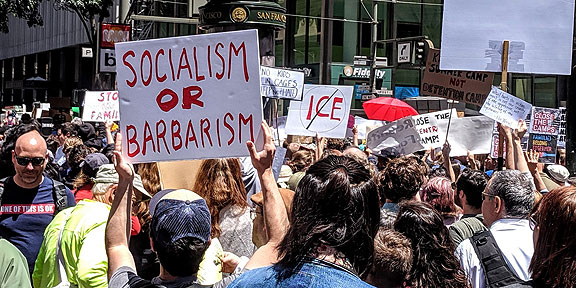
Today’s headlines are dominated by the reality TV host-in-chief, who has few skills beyond a finely honed ability to capture the news cycle with hysterical racism. The much-promoted plans to deport thousands of people is traumatizing not only to the communities who face the raids directly, but to a large swath of the country who cannot come to grips with the simple fact that as the slogan has it, “Never Again is Now.” We live in a society with thousands held in concentration camps along the border, with a growing paramilitary force of self-satisfied fascist thugs (the ICE Facebook group should be evidence enough of that), supplemented by the blind eye the FBI turns to the rise and growth of actual terrorist cells of white supremacists all over the hinterlands of the U.S. The mass murders carried out by white incels and racists, directed against women and people of color, are treated as individual cases of psychosis, while political mobilization by African Americans, Latinos, Muslims, women, and ecologists are categorized as threats to national security. All of this combines to drive many people into resigned numbness, putting all their hopes in another round of empty elections that they dream will surely reverse this descent into fascism. But the long trajectory of American history should give pause to that fantasy. The deep racism embedded in the American experience is apparently easy to bring forth, as Trump’s success has shown. The long-term demographic decline of the white majority is cause for hope, but as our current era amply demonstrates, the reactionary and fearful population of white America is not going to disappear quietly.
I went to the border with Adriana in 2012 during the Obama presidency, and it was really awful already. The petty authoritarianism of ICE troops, the militarization of hundreds of miles of southern lands far from the actual border, the general polarization of the population into racist immigrant bashers and the majority who reject that, all of this was already fully developed years before Trump. It will still be with us when Trump is gone. The future is guaranteed to see huge increases in human migration: flows of refugees fleeing climate disasters and/or brutal militaristic gangs, both state-authorized and unofficial. Self-appointed guardians of white America are dying out, but it will be decades before they’ve finished inflicting terror and havoc on our lives. There is no room to tinker with state policies to find a middle ground between today’s worsening barbarism and something new and truly liberatory, that goes well beyond our current ideas of socialism into a world where we all produce and share a common wealth together. Challenging directly the militarization of the United States, radically reducing the role of both the military and police, ending the carceral state, withdrawing from policing the world and radically shrinking the standing army and the military budget, all are frontline necessities if we want to alter the trajectory of U.S. history. Any politics that shrinks from the historic obligations of returning stolen lands, withdrawing from violent domination, extending genuine reparations to African Americans, Native Americans, and anyone who has been violated by centuries of mistreatment, is a politics of maintaining systemic injustice.
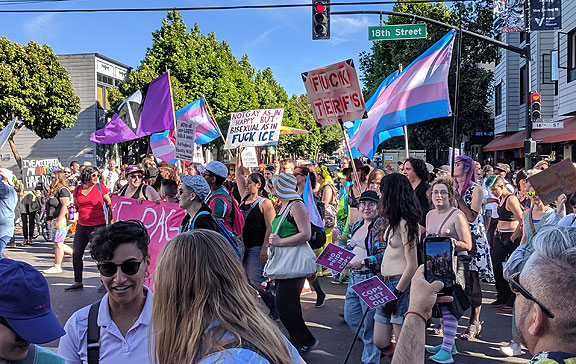
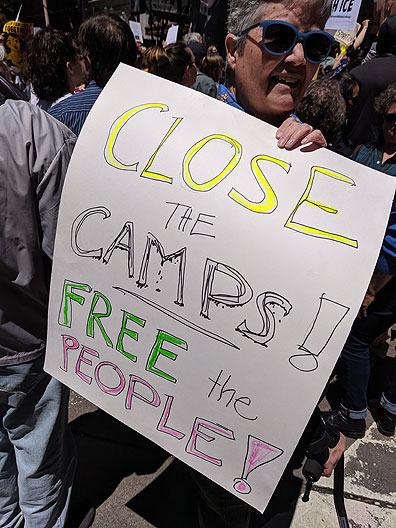
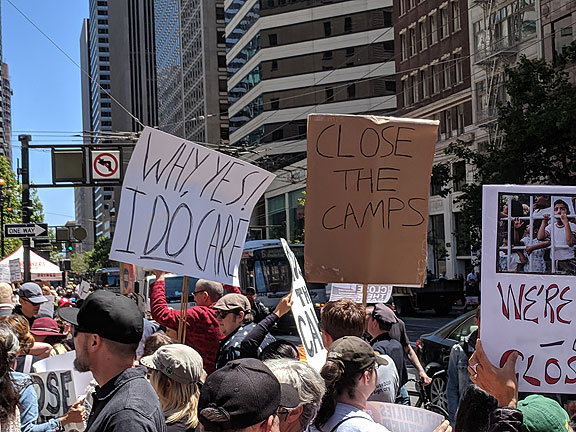












Great writing, excellent selections from obviously extremely important writers on the most basic and important of subjects.
“Socialism or Barbarism” – well, we know which one has all the entrenched power in the world.